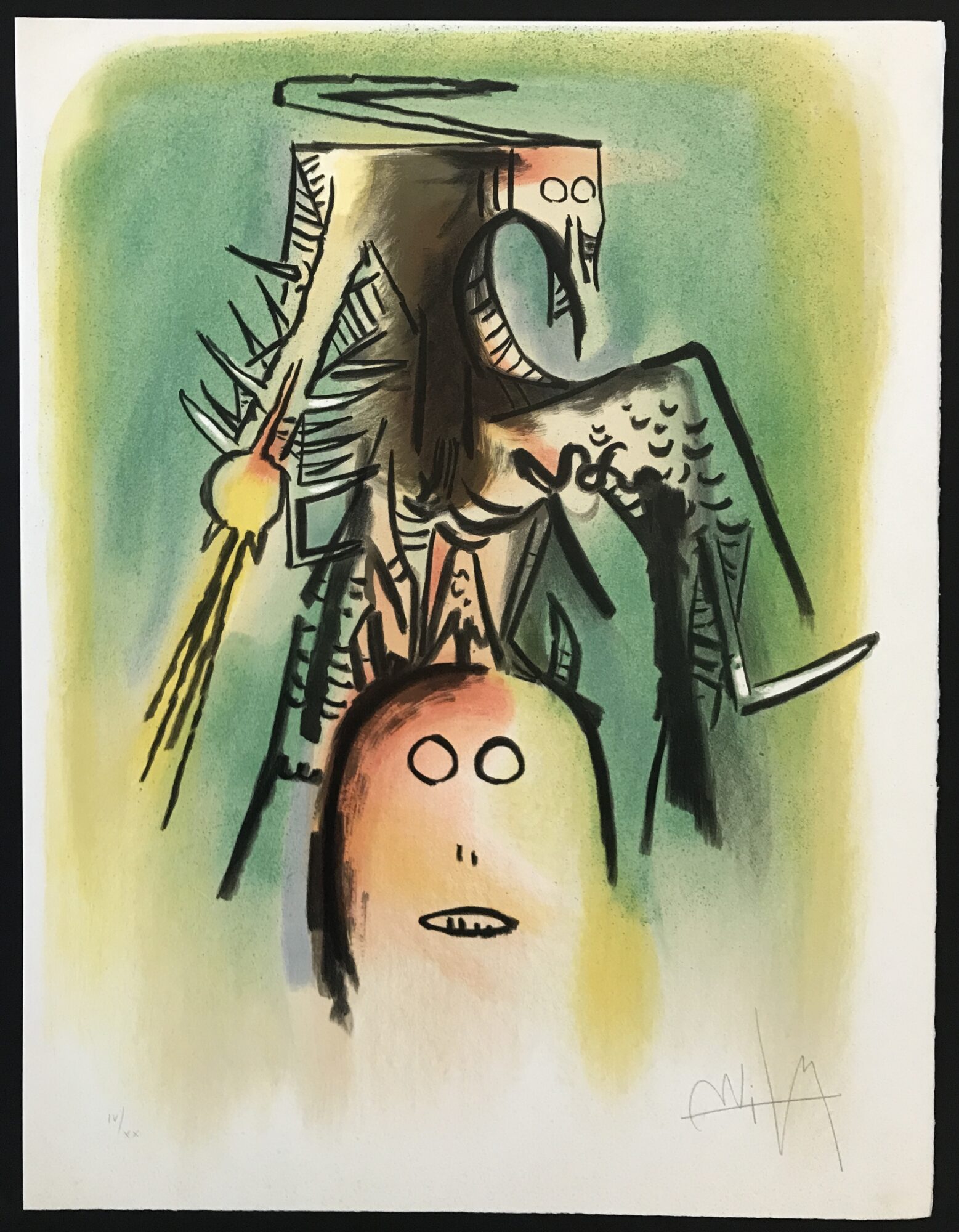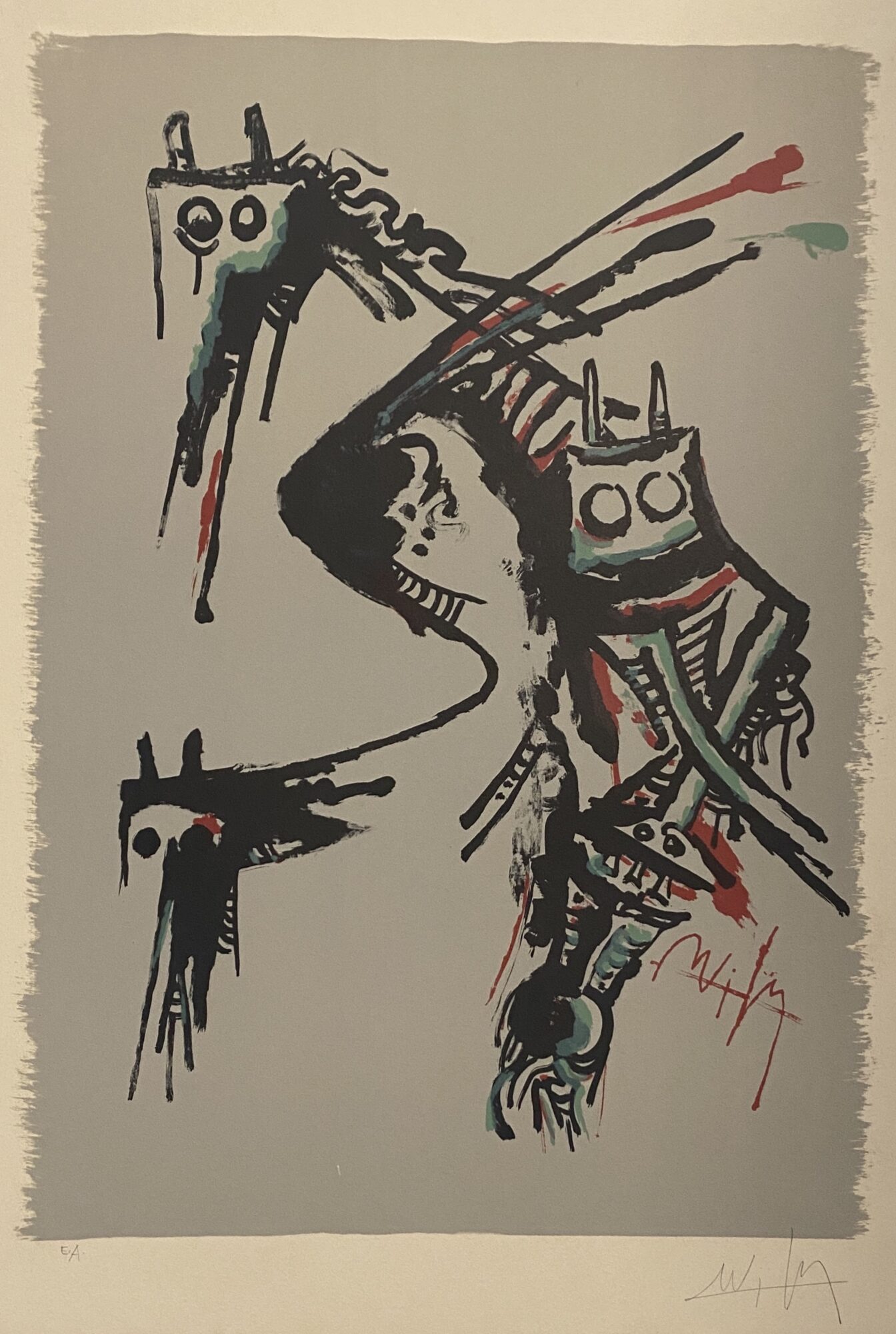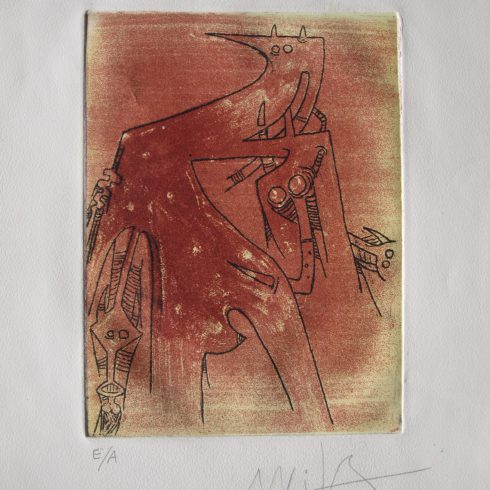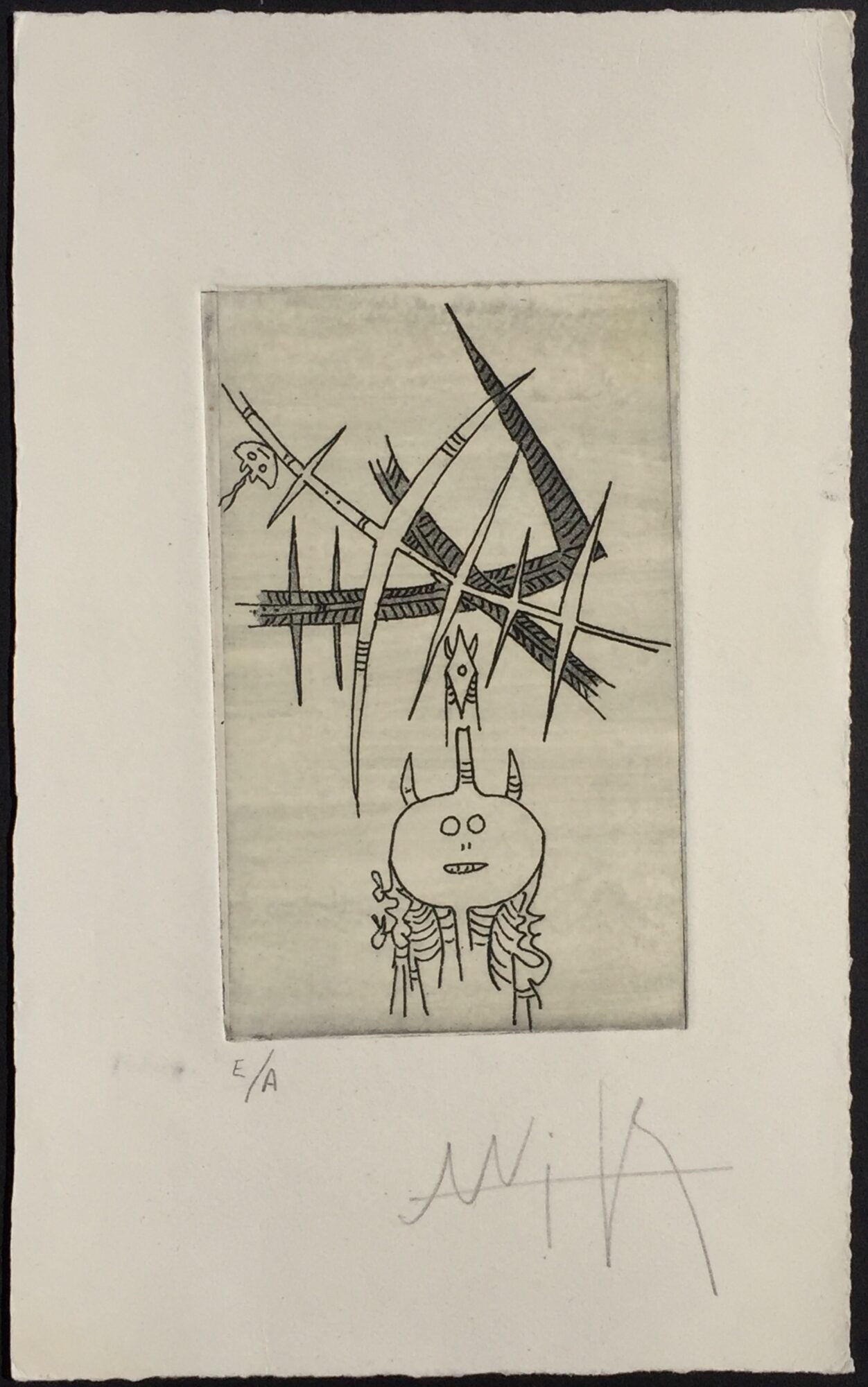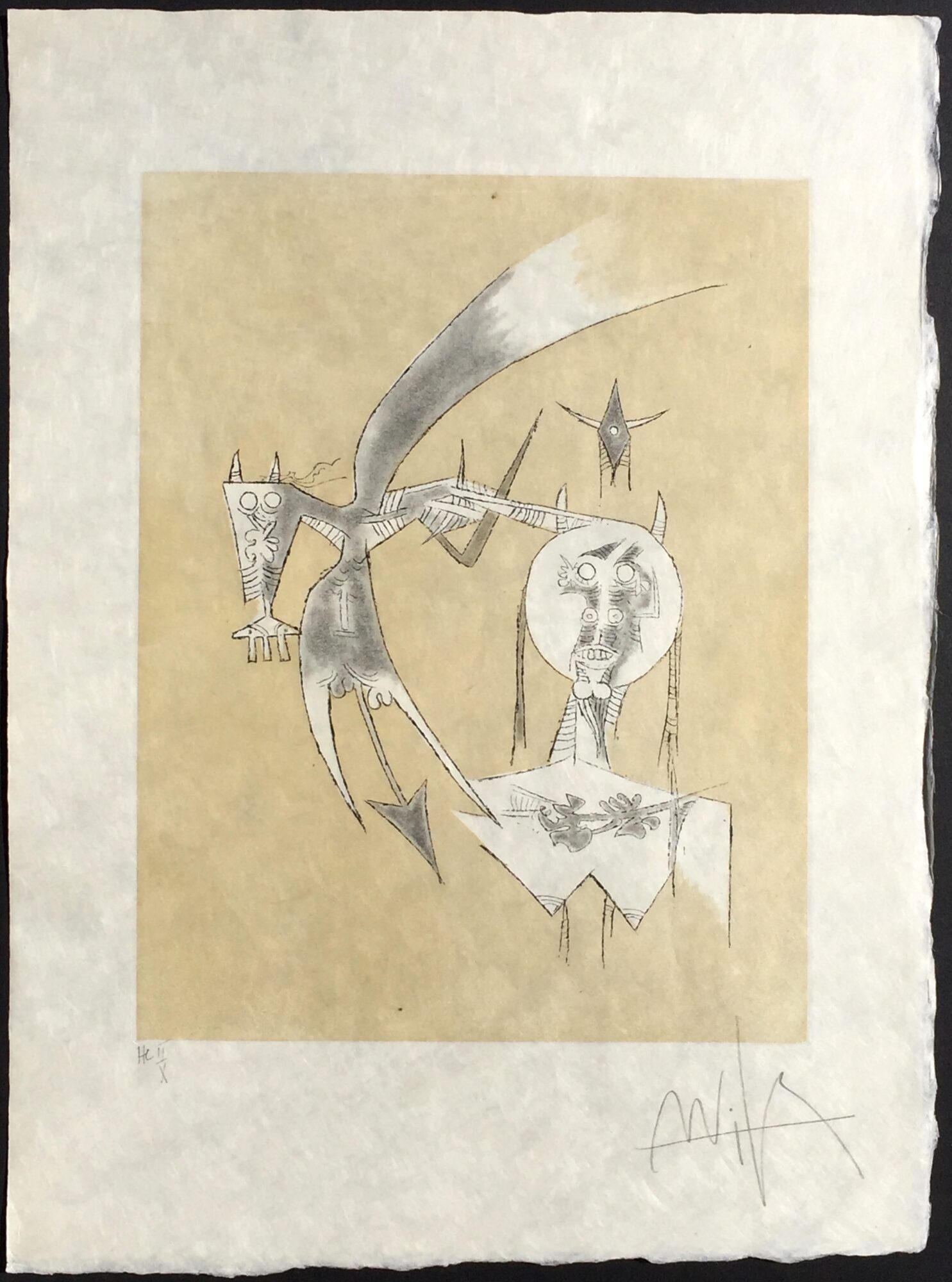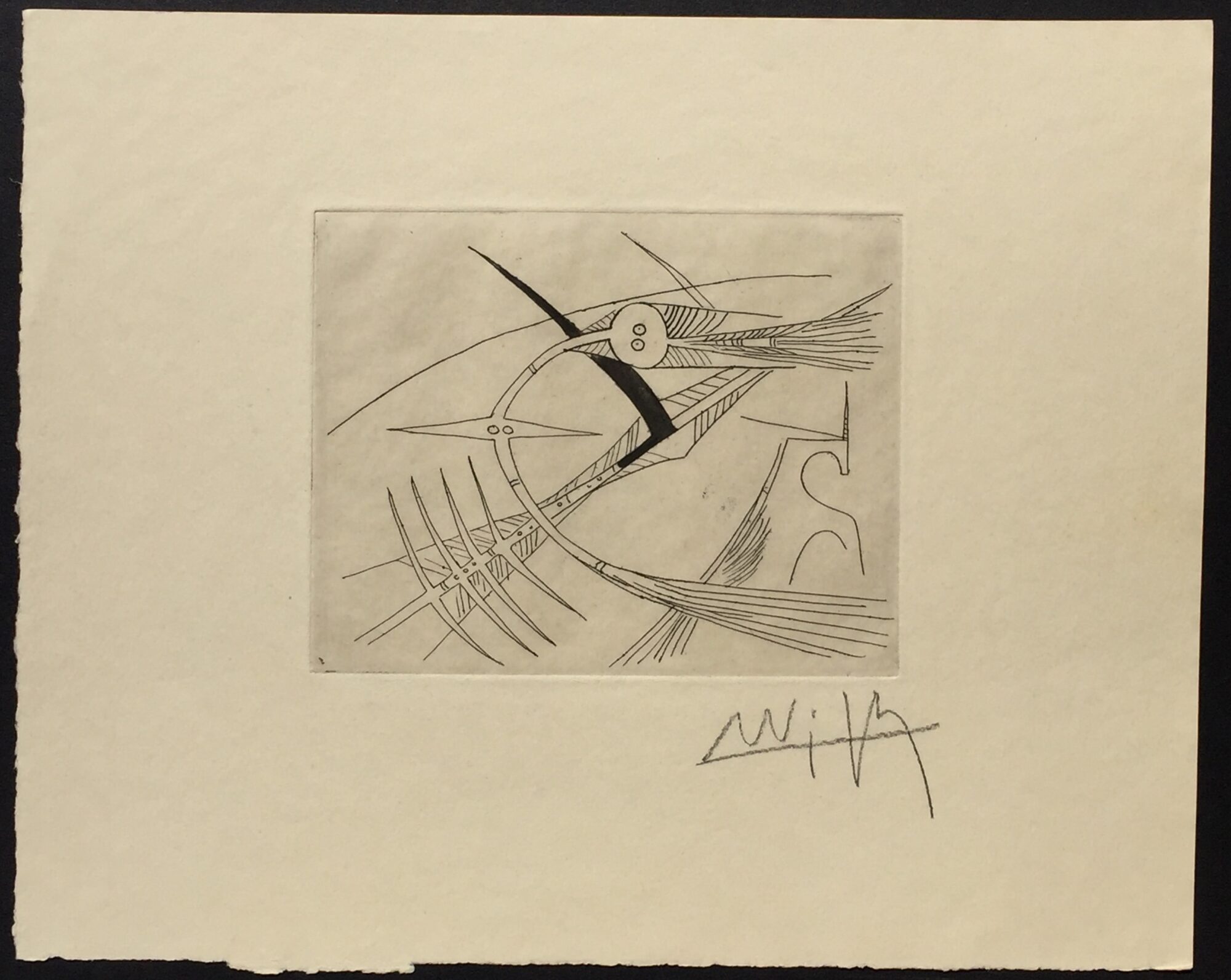Sans Titre II
Sans Titre II, 1981 by Wifredo Lam is a colored Lithograph. This print is signed in the lower right margin of the print and numbered from the edition of 150 in the lower left margin.
A major early 20th-century painter, Wifredo Lam fused elements of Cubism and Surrealism with African culture in paintings that were exhibited alongside those of Pablo Picasso and other Cubists and Fauvists. A native Cuban, Lam hailed from Chinese, European, Indian, and mixed-African descent, and he was deeply influenced by African spiritual practices such as Santeria. He studied in Spain under the same teacher as Salvador Dalí and became a friend of Picasso after moving to Paris in 1938. After returning to Havana in 1941, Lam began producing paintings that were dominated by hybridized human-animal-vegetal figures. There he produced his most famous work, The Jungle (1943), which depicted four grotesque figures with mask-like faces emerging from dense vegetation, and has drawn comparisons with Picasso’s masterpiece Guernica (1937).
The internationally renowned Cuban painter Wifredo Lam (1902-1982) was a precursor of a cross-cultural style of painting, infusing Western modernism with African and Caribbean symbolism. His peripatetic life brought him into contact with all the avant-garde movements of his times―cubism, surrealism, CoBrA―whose incentives for greater freedom in art, for unleashing the unconscious, and for exploring the “marvelous” through automatic writing had great impact on his work. But Lam never lost sight of the world around him and like his friend Aimé Césaire took on the struggle “to paint the drama of his country, the cause and spirit of the blacks.” He invented a highly original voice that speaks in the name of “defending human dignity” and “saluting freedom.”
| Medium | Lithograph |
|---|---|
| Year | 1981 |
| Edition | 150 |
| Catalogue Raisonné | NA |
| Signature | Signed |
| Size | 38 x 27.5 (in) 97 x 70 (cm) |
| Price | Price on Request |
Description
Sans Titre II, 1981 by Wifredo Lam is a colored Lithograph. This print is signed in the lower right margin of the print and numbered from the edition of 150 in the lower left margin.
A major early 20th-century painter, Wifredo Lam fused elements of Cubism and Surrealism with African culture in paintings that were exhibited alongside those of Pablo Picasso and other Cubists and Fauvists. A native Cuban, Lam hailed from Chinese, European, Indian, and mixed-African descent, and he was deeply influenced by African spiritual practices such as Santeria. He studied in Spain under the same teacher as Salvador Dalí and became a friend of Picasso after moving to Paris in 1938. After returning to Havana in 1941, Lam began producing paintings that were dominated by hybridized human-animal-vegetal figures. There he produced his most famous work, The Jungle (1943), which depicted four grotesque figures with mask-like faces emerging from dense vegetation, and has drawn comparisons with Picasso’s masterpiece Guernica (1937).
The internationally renowned Cuban painter Wifredo Lam (1902-1982) was a precursor of a cross-cultural style of painting, infusing Western modernism with African and Caribbean symbolism. His peripatetic life brought him into contact with all the avant-garde movements of his times―cubism, surrealism, CoBrA―whose incentives for greater freedom in art, for unleashing the unconscious, and for exploring the “marvelous” through automatic writing had great impact on his work. But Lam never lost sight of the world around him and like his friend Aimé Césaire took on the struggle “to paint the drama of his country, the cause and spirit of the blacks.” He invented a highly original voice that speaks in the name of “defending human dignity” and “saluting freedom.”
Wifredo Lam was an Afro-Cuban artist best known for his unique Surrealist aesthetic that combined European artistic movements with the imagery of his native country. “I responded always to the presence of factors that emanated from our history and our geography, tropical flowers, and black culture,” Lam once said. In one of his most famous paintings, The Jungle (1943), these various influences are melded together, onto a single large-scale canvas. Born Wifredo Oscar de la Concepción Lam y Castilla on December 8, 1902 in Sagua la Grande, Cuba, the painter moved to Madrid, Spain in 1923 to study with Fernando Álvarez de Sotomayor, who had been the teacher of famed Surrealist Salvador Dalí. Lam moved to Paris after seeing an exhibition of Pablo Picasso’s work in Spain. Having arrived in Paris, he introduced himself to Picasso who subsequently showed Lam his collection of primitive artworks. The two artists’ interaction figured heavily in Lam’s work throughout the remainder of his career. He died on September 11, 1982 in Paris, France at the age of 79. Today, the artist’s works are held in the collections of the Tate Gallery in London, the Reina Sofia Museum in Madrid, The Museum of Modern Art in New York, and the National Gallery of Art in Washington, D.C., among others.
Additional information
| Medium | Lithograph |
|---|---|
| Year | 1981 |
| Edition | 150 |
| Catalogue Raisonné | NA |
| Signature | Signed |
| Size | 38 x 27.5 (in) 97 x 70 (cm) |
| Price | Price on Request |





